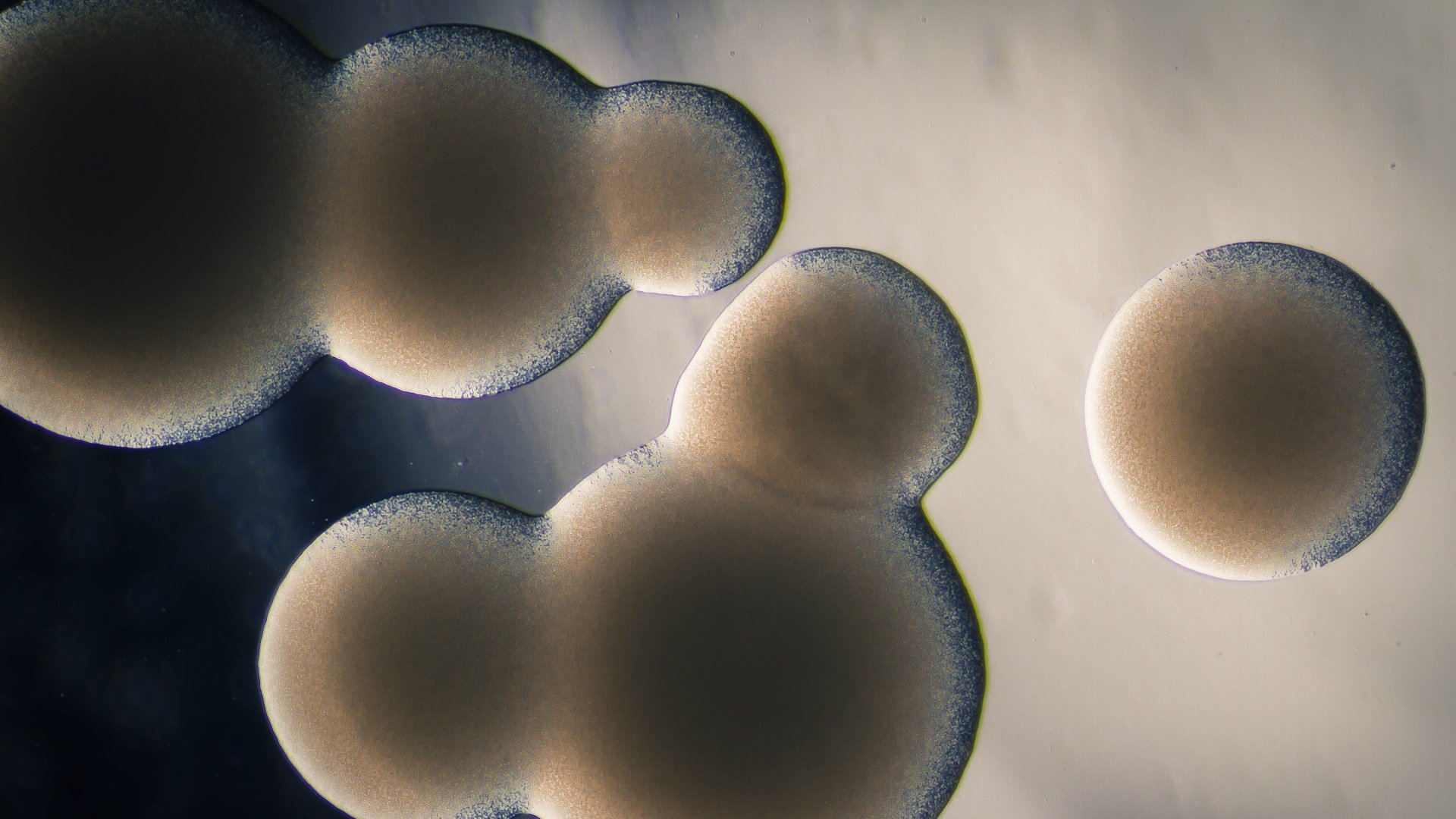Even microbes must live with each other. Many microbes even live together with millions of their own, for example when they are cultured in our lab. The invisibly small microbes become visible tot the naked eye as a colony consisting of millions of individuals.
Even microbes must live with each other. Many microbes even live together with millions of their own, for example when they are cultured in our lab. The invisibly small microbes become visible tot the naked eye as a colony consisting of millions of individuals.
Different types of colonies
The word colony has a lot of different meanings, both within and outside of biology. But in this article we limit ourselves to the field of microbiology. It describes a group of microbes that spring from a single individual, or a group of microbes from the same species that live together.
A bacterial colony is a colony of the first type. If a single bacterium lands on a nutrient-rich culture plate it can start dividing. Because bacteria can divide really quickly through binary fission, they can double in numbers within 20 minutes. This means that in a short timespan there can be millions of bacteria present, so many in fact that the colony is visible to the naked eye as a slimy hill. If colonies form a whole layer together, we call that layer a biofilm.
Coenobium
But not only bacteria can live in colonies. Algae can also form colonies, which are sometimes an example of the second type of colony. In these colonies, multiple individuals of the same species live closely together. Such a colony of algae cells is called a coenobium, and we often call the species that form coenobia social algae. In Micropia we culture multiple social algae, such as Scenedesmus quadricauda (in square groups), Pediastrum boryanum (in spikeballs) and Volvox (in large spheres). The Volvox algae perhaps form the most exceptional coenobia, which can propel themselves forward by whirling around through the water.
Curious what these different colonies look like in real-life? Come take a look and see them in Micropia!

